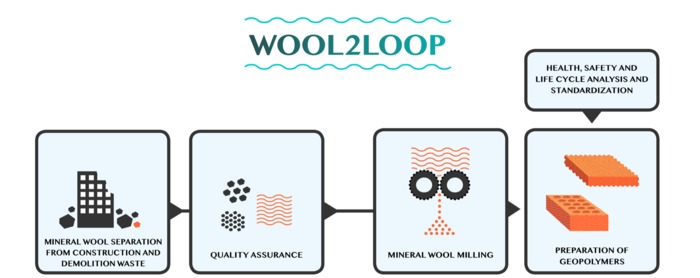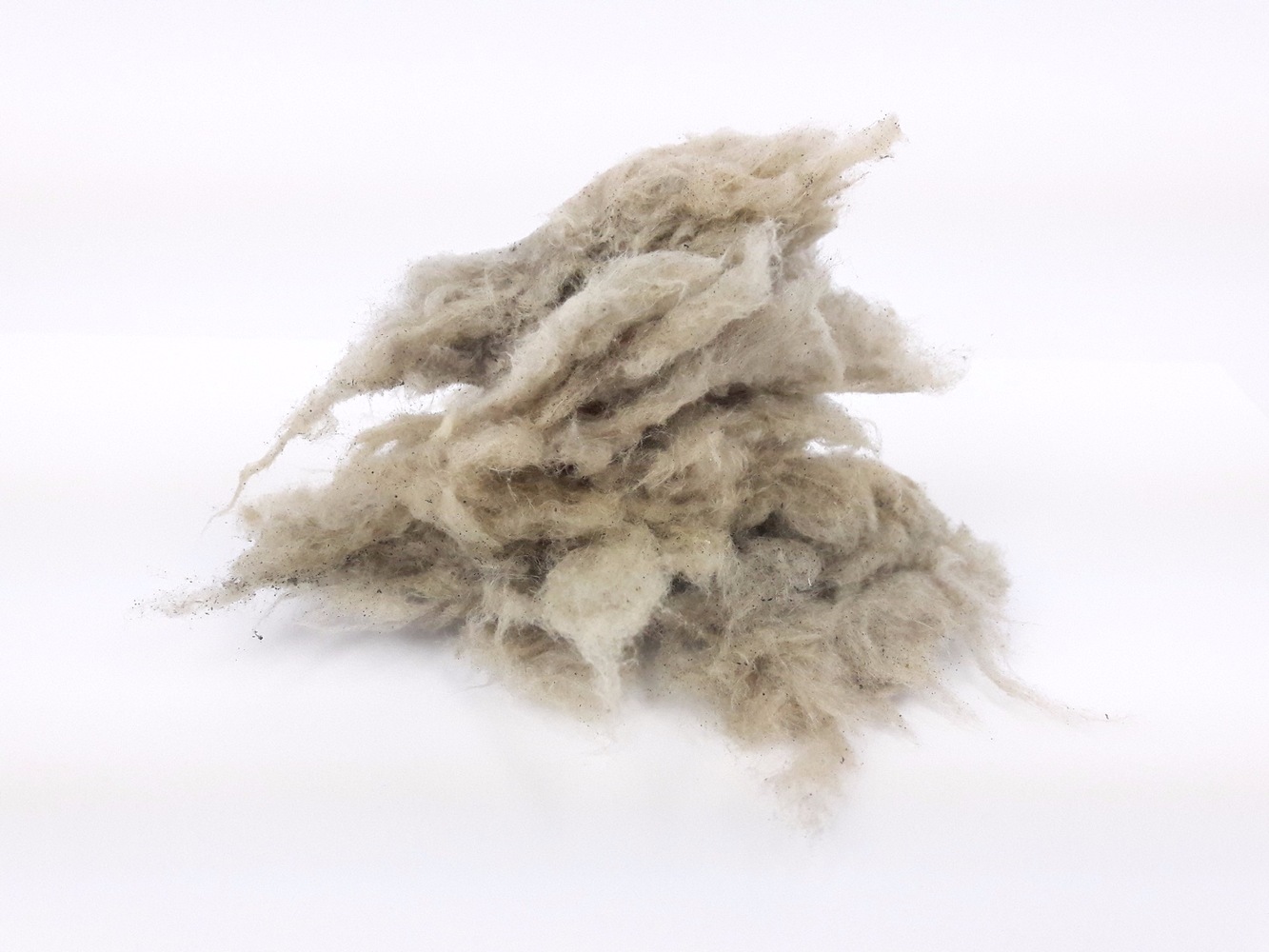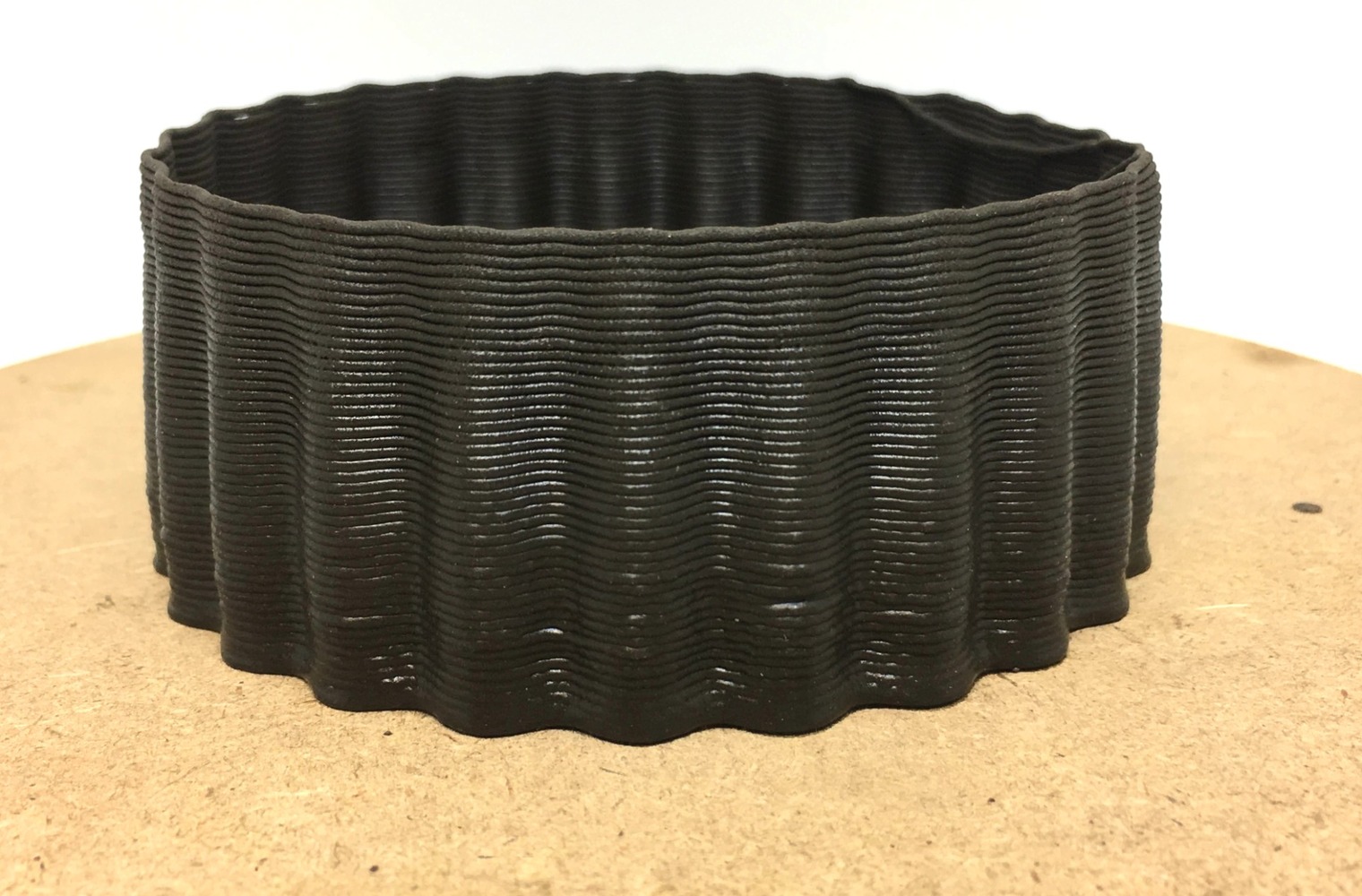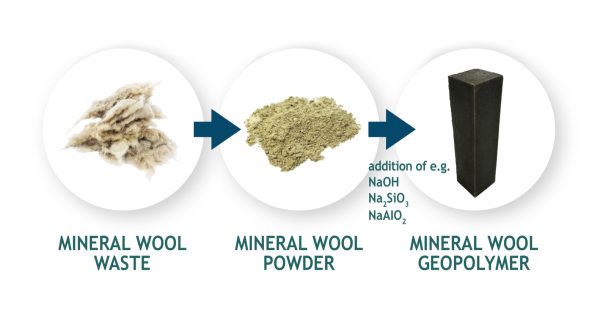
When tackling the process of recycling building materials, numerous challenges arise in achieving a comprehensive and effective outcome. First, careless demolition complicates the process, as materials destined for different recycling streams are often mixed. Additionally, not all materials can be efficiently recycled or processed due to the need for costly or overly complex procedures. However, the construction industry, being a major contributor to waste production and greenhouse gas emissions, has also developed various new technologies to improve its practices. A notable example is the WOOL2LOOP project, which aims to address one of the most significant challenges in applying a circular approach to construction and demolition waste.
One example of the untapped potential of circularity is mineral wool. These fibrous materials are created by spinning or extracting minerals or molten rocks, such as slag and ceramics. They serve as excellent thermal and acoustic insulators due to their extremely low density. However, this same property makes them problematic during demolition, as they occupy considerable space in landfills; they are lightweight but highly voluminous. According to Dorr, “In Europe, around 2.5 million tonnes of mineral wool waste are generated each year in construction and demolition. Currently, mineral wool waste is almost entirely deposited in landfills, resulting in an annual cost of around €250 million for the construction sector.”

The WOOL2LOOP project aims to repurpose mineral wool waste into products such as façade panels, acoustic sheets, paving tiles, and even aggregates for 3D printers. This process involves separating the mineral wool residues, grinding them, and utilizing them through alkaline activation (or geopolymerization) to convert them into ceramic or concrete-like materials. Geopolymers are considered viable alternatives to traditional Portland cement (OPC), primarily due to their comparable mechanical properties and significantly lower carbon dioxide emissions. A major benefit of this process is that various residues from existing industrial processes, such as fly ash or kiln slag, can be used to manufacture geopolymers, making it both environmentally and economically advantageous. To illustrate the impact, approximately 5-10% of all human-made CO2 emissions come from cement production. Geopolymerization is increasingly accepted as a method for producing low carbon dioxide binders and other materials from various industrial by-products, including mineral wool waste, according to Dorr.

Among the various aspects of the project, 3D printing stands out as particularly promising. Researchers are currently testing different geopolymer blends that incorporate insulation materials recovered from construction sites to evaluate their printing capabilities. By adjusting the mixing ratios and adapting the printing technology, it is possible to create new geometries that would be impossible to achieve with traditional techniques, according to Dorr.

WOOL2LOOP has been developed by a consortium of 15 partners, including companies like Saint-Gobain Finland, along with an NGO and research institutions. Anne Kaiser, Sustainability Manager at Saint-Gobain Finland, explains, “By turning mineral wool at the end of its life into a raw material for new products, we become part of new industrial ecosystems and promote eco-innovation in the circular economy, while reducing the amount of landfilled construction and demolition waste,” as reported by Dorr.


